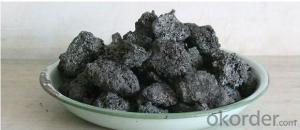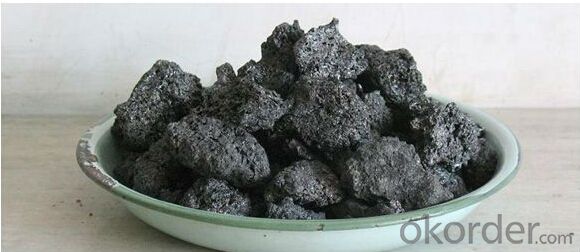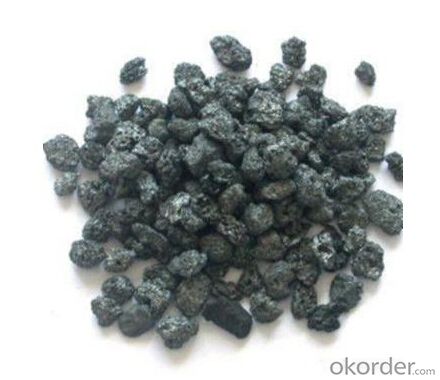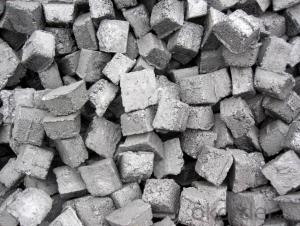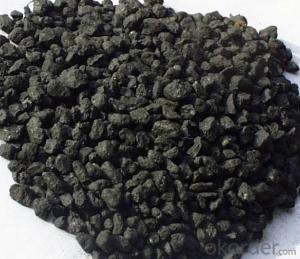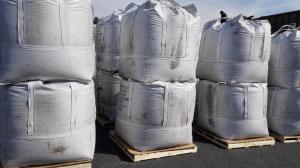CPC Low Sulfur Petroleum Coke FC 98% Cheap Price
- Loading Port:
- Tianjin
- Payment Terms:
- TT or LC
- Min Order Qty:
- 20 m.t.
- Supply Capability:
- 1500 m.t./month
OKorder Service Pledge
OKorder Financial Service
You Might Also Like
Packaging & Delivery
| Packaging Detail: | 50kg/bag 100kg/bag 1000kg/bag Or according with client need to do |
| Delivery Detail: | 2 weeks |
Specifications
CPC Low Sulfur Petroleum Coke FC 98% Cheap Price
Petroleum coke products can be divided into needle coke, sponge coke, projectile coke and coke breeze four kinds.
Calcined Petroleum Coke
F.C.: 98.5%MIN
ASH: 0.8% MAX
V.M.: 0.7%MAX
S:0.5%MAX
Moisture: 0.5%MAX
Structure
CPC Low Sulfur Petroleum Coke FC 98% Cheap Price
Shape: granule
Dimensions: 0-1mm, 1-5mm, 1-6mm, 2-8mm, etc
Product Type: Carbon Additive
C Content (%): 98-99.5% MIN
Working Temperature: -
S Content (%): 0.5%-0.7%MAX
Ash Content (%): 0.7%MAX
Volatile:0.8%MAX
Moisture: 0.5% MAX
ADVANTAGE: low ash & sulfur
COLOR: Black
Feature
CPC Low Sulfur Petroleum Coke FC 98% Cheap Price
Physics and chemistry performance :
Unit | Index | |||||
No.1 | No.2 | No.3 | ||||
Density | g/cm3 | 2.04 | 2.00 | 2.00 | ||
sulphur content | %≤ | 0.5 | 1.0 | 2.5 | ||
volatility | %≤ | 0.5 | 0.5 | 0.5 | ||
ash content | %≤ | 0.5 | 0.5 | 0.5 | ||
moisture | %≤ | 0.3 | 0.5 | 0.5 | ||
charcoal | %≤ | 98.5 | 98.0 | 98.0 | ||
Image
CPC Low Sulfur Petroleum Coke FC 98% Cheap Price
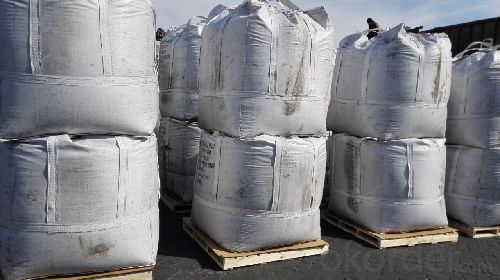
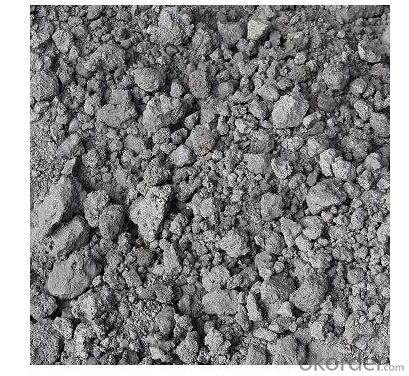
FAQ:
CPC Low Sulfur Petroleum Coke FC 98% Cheap Price
How to classify calcined petroleum coke?
1) According to difference of sulfur content, can be divided into high sulfur coke (sulfur content more than 4%), sulphur in coke sulfur content (2% 4%) and low sulfur coke (sulfur content below 2%).
2) Petroleum coke products can be divided into needle coke, sponge coke, projectile coke and coke breeze four kinds:
3) Needle coke, has obvious needle-like structure and fiber texture, mainly used for steel-making in high power and ultra-high power graphite electrode. As a result of needle coke in sulfur content, ash content, volatile matter and true density and so on have strict quality requirements, so the production process of needle coke and raw materials have special requirements.
4) The sponge coke, high chemical reactivity, low content of impurities, mainly used in the aluminum industry and carbon industry.
5) Focal or spherical coke: the projectile shape is round, diameter 0.6-30 mm, usually from the production of high sulphur, high asphaltic residual oil, can only be used as industrial fuel power generation, cement etc.
6) Coke breeze: fluidized coking process, the fine particles (0.1- 0.4 mm) in diameter, high volatile, high expansion coefficient, cannot be directly used for electrode preparation and carbon industry.
Advantage:
CPC Low Sulfur Petroleum Coke FC 98% Cheap Price
1. High quality and competitive price.
2. Timely delivery.
3. If any item you like. Please contact us.
Your sincere inquiries are typically answered within 24 hours.
- Q: What are the advantages of carbon-based fertilizers?
- Farmers and gardeners favor carbon-based fertilizers for several reasons. Firstly, these fertilizers, such as compost and manure, are organic and derived from natural sources, devoid of synthetic chemicals. This eco-friendly quality reduces the risk of water pollution and soil degradation. Secondly, carbon-based fertilizers contain ample organic matter, enhancing soil structure and water retention. This proves especially helpful in areas with infertile soil or frequent droughts, as it conserves moisture and prevents nutrient loss. Furthermore, these fertilizers foster the growth of beneficial microorganisms in the soil. These microorganisms gradually break down organic matter, releasing essential nutrients and ensuring a steady supply to plants. The result is improved plant health and a decreased likelihood of nutrient imbalances or deficiencies. Additionally, carbon-based fertilizers prove cost-effective in the long run. Though they may require more effort and time initially, they can be produced on-site through composting or sourced locally from farms or livestock operations. This reduces the need for expensive chemical fertilizers and minimizes transportation costs. Lastly, carbon-based fertilizers aid in carbon sequestration and contribute to combating climate change. By utilizing organic waste materials as fertilizers, they divert them from landfills, where they would emit greenhouse gases. Instead, they are recycled into the soil, increasing its carbon content and promoting soil health. In summary, carbon-based fertilizers offer numerous advantages in terms of sustainability, soil fertility, cost-effectiveness, and environmental impact. Their usage can yield healthier plants, improved soil quality, and a more sustainable and resilient agricultural system.
- Q: Often see a lot of cars made of carbon fiber body, is this material flammable?
- Carbon fiber has the characteristics of light quality, high strength and not easy to burn. More and more widely used
- Q: Buy carbon carving, how to identify him is true or false, and the quality of good or bad?
- General consumers believe that bamboo charcoal, powder, charcoal and purple carbon carving are "carbon" to do, and the former is very cheap, why not buy them, in fact, otherwise, because not the same kind of products. Bamboo charcoal and powdered activated carbon have little effect on the purification of indoor air. Their function is not different from that of a pack of quicklime - adsorption of water vapor. But consumers are not aware of this, they also propaganda have the function of purifying air and we mixed together to sell, finally, once consumers buy found not what role, will also lose confidence in carving, which makes us very sad.Let's talk about bamboo charcoal first. Charcoal is not a purple carbon carving, this is a common sense. If bamboo charcoal can also absorb toxic and harmful gases, then the main material of gas masks do not need to use more expensive activated carbon, but not sublimation of purple carbon carving, and the price of bamboo charcoal is not economical? Because the bamboo charcoal and charcoal are natural burning carbon, not activated by directional adsorption, namely, pickling, washing, activation process, the adsorption of activated carbon 1/10 is insufficient, they can have is to adjust the indoor temperature, not only this, as they advertised "bamboo charcoal is activated carbon is purple carbon carving".Say, powdered activated carbon.
- Q: I bought a grill myself and went to barbecue with my friends the day after tomorrow, but I can't ignite the carbon. What should I do?
- Is it barbecue in the field? If so, there are many ways to ignite carbon in the wild.The simplest, affordable way is to pile up the fire, and then use the charcoal on it, charcoal will be used after burning.At home, it is placed directly on the gas range, ignited.Charcoal direct ignition is not convenient, it is best to use other things as medium ignition.Be careful when you're in the barbecue. Watch out for the fire.
- Q: What is the carbon footprint?
- The carbon footprint is a measure of the total greenhouse gases, specifically carbon dioxide (CO2), that are released into the atmosphere due to human activities. It quantifies the impact individuals, organizations, or countries have on the environment by contributing to climate change. This impact encompasses both direct emissions from burning fossil fuels for transportation, heating, and electricity, as well as indirect emissions from the production and transportation of goods and services we consume. Measured in units of carbon dioxide equivalent (CO2e), the carbon footprint serves as a vital tool for assessing and managing our environmental influence. By comprehending and diminishing our carbon footprint, we can alleviate climate change and strive for a more sustainable future.
- Q: Who is the high carbon content of stainless steel and ordinary steel?
- This is not necessarily stainless steel is carbon steel, based on the addition of zinc, nickel and chromium and other elements
- Q: What is carbon capture and storage?
- Carbon capture and storage (CCS) is a process that involves capturing carbon dioxide emissions from industrial sources, such as power plants, and storing them underground or using them for various purposes. It aims to mitigate the release of greenhouse gases into the atmosphere, helping to combat climate change by reducing carbon dioxide levels.
- Q: What is carbon neutral packaging?
- Carbon neutral packaging refers to packaging materials and processes that have a net-zero carbon footprint. It means that the emissions produced during the production, transportation, and disposal of the packaging are offset or balanced by activities that remove or reduce an equivalent amount of carbon dioxide from the atmosphere. This approach helps minimize the environmental impact of packaging and contributes to sustainability goals by reducing greenhouse gas emissions.
- Q: What are the problems that should be paid attention to in the injection molding of the material? Who has some details about carbon fiber injection? Thank you for sharing
- Carbon fiber melting point at about 3000 degrees (isolation oxygen, oxygen, about 400 degrees will be oxidized), itself can not be injection processing, only carbon fiber filled plastic can be injection molding.
- Q: How does carbon impact the availability of clean drinking water?
- Carbon, primarily in the form of carbon dioxide (CO2), contributes to climate change and alters precipitation patterns. This can lead to increased frequency and intensity of droughts and floods, affecting the availability and quality of clean drinking water. Additionally, carbon-based pollutants from industries and transportation can contaminate water sources, making them unsafe for consumption.
Send your message to us
CPC Low Sulfur Petroleum Coke FC 98% Cheap Price
- Loading Port:
- Tianjin
- Payment Terms:
- TT or LC
- Min Order Qty:
- 20 m.t.
- Supply Capability:
- 1500 m.t./month
OKorder Service Pledge
OKorder Financial Service
Similar products
Hot products
Hot Searches
Related keywords
